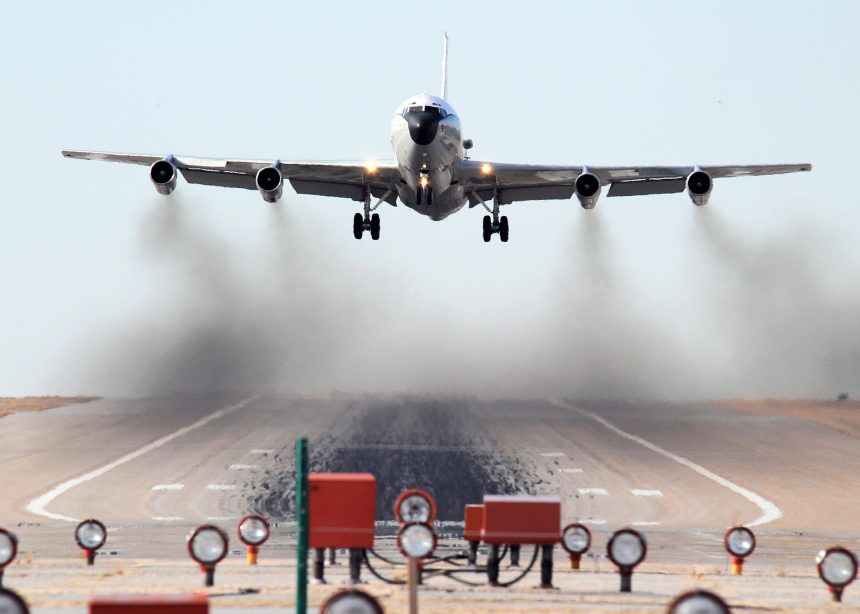The WC-135 Constant Phoenix has launched from RAF Mildenhall earlier today for a mission towards northern Europe and the Barents Sea. Interestingly, an RC-135W spyplane has launched from the same base on the same route. What’s their mission?
As you probably already know, on Feb. 17, 2017, U.S. Air Force WC-135C Constant Phoenix Nuclear explosion “sniffer,” serial number 62-3582, deployed to RAF Mildenhall, UK, using radio callsign “Cobra 55.”
Whereas it was not the first time the Constant Phoenix visited the British airbase, the deployment to the UK amidst growing concern about an alleged spike in iodine levels recorded in northern Europe fueled speculations that the WC-135 might be tasked with investigating the reason behind the released Iodine-131.
In fact, along with monitoring nuclear weapons testing, the WC-135 can be used to track radioactive activity, as happened after the Chernobyl nuclear plant disaster in the Soviet Union in 1986 and Fukushima incident back in 2011, by collecting particles and chemical substances in the atmosphere, days, weeks, or sometimes even month after they were dispersed.
Whilst the reason of the deployment has yet to be confirmed (actually, there are still contradictory reports about the spike in Iodine-131) the WC-135 has departed for its first mission since it arrived at Mildenhall: on Feb. 22, at around 11.50LT, the nuclear “sniffer” aircraft has departed for a mission towards Norway and the Barents Sea.
Tracking over the North Sea
USAF Rivet Joint
62-4138 PULPY81
USAF Constant Phoenix
62-3582 FLORY58 pic.twitter.com/swe26yWJiI
— CivMilAir ✈ ? (@CivMilAir) February 22, 2017
The WC-135C (radio callsign “Flory 58”) was supported by two KC-135 tankers (“Quid 524” and “525”)suggesting it had just started a very long mission and somehow accompanied, along the same route, by an RC-135W (“Pulpy 81”) and another Stratotanker (“Quid 513”).
Tracking north off the east coast of Scotland.
RC-135W & WC-135C + 3 accompanying KC-135 tankers… pic.twitter.com/y8LIAxRpoh
— CivMilAir ✈ ? (@CivMilAir) February 22, 2017
It’s hard to guess the type of mission this quite unusual “package” has embarked on: investigating the alleged iodine spike? Collecting intelligence on some Russian nuclear activity? Something else?
Hard to say.
For sure, once the aircraft reached Aberdeen, eastern Scotland, they turned off their transponder becoming invisible to the flight tracking websites such as Flightradar24.com or Global.adsbexchange.com that use ADS-B, Mode S and MLAT technologies to monitor flights: a sign they were going operational and didn’t want to be tracked online.
H/T to @CivMilAir for the heads up and details
















